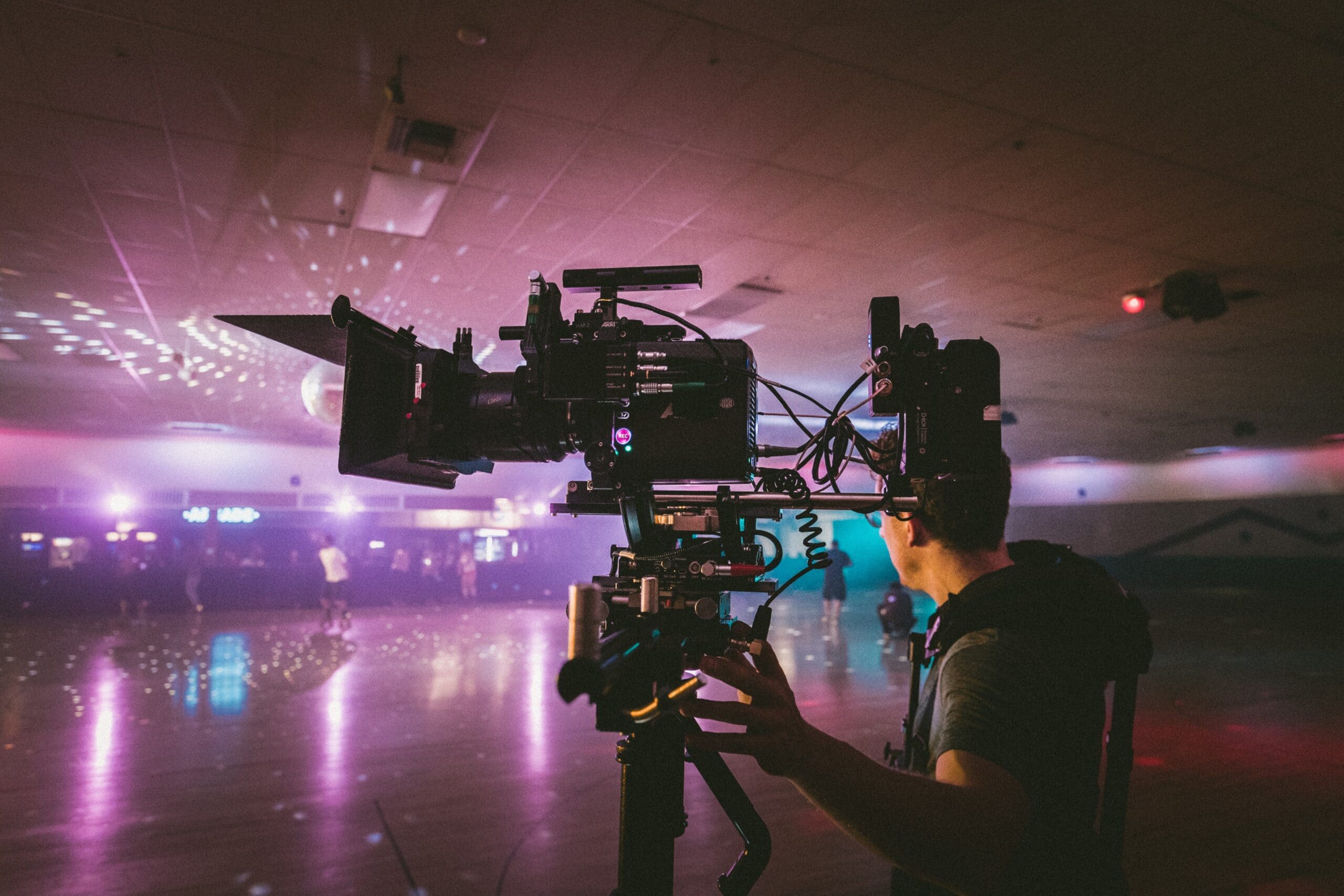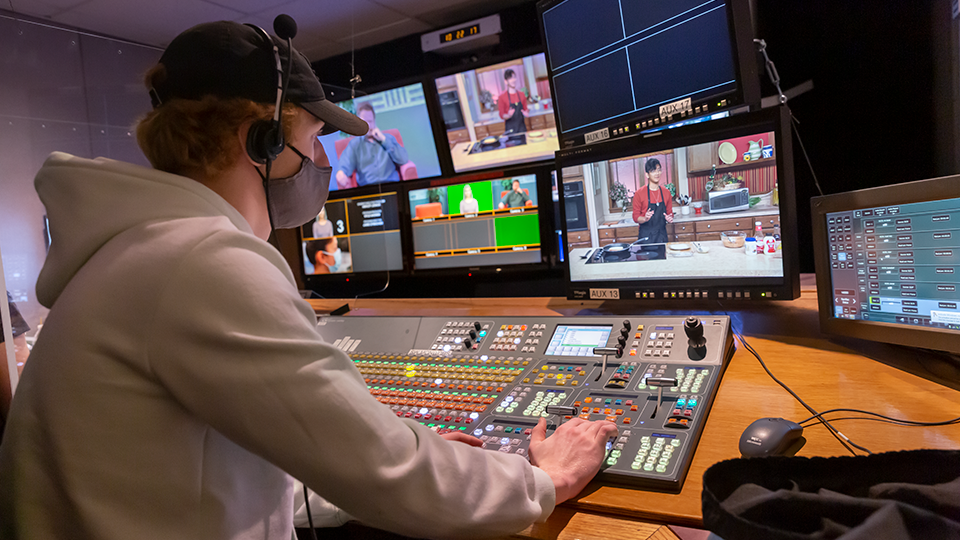Exploring the most recent Patterns in Video Production for 2025
As we approach 2025, the video production landscape is poised for significant development, characterized by improvements in augmented truth and AI-driven modifying tools. The assimilation of interactive storytelling and immersive 360-degree experiences is redefining target market involvement, while sustainable production practices acquire importance. Furthermore, enhanced online streaming capacities are readied to equalize material gain access to like never previously. These growths raise crucial questions about the future of imagination and technology in video production-- what implications will these fads hold for customers and developers alike?
Augmented Truth in Video Production
Enhanced fact (AR) is poised to reinvent video production by perfectly mixing electronic components with live-action footage. This ingenious modern technology boosts storytelling by offering immersive experiences that engage customers on a deeper degree. AR enables filmmakers to include interactive graphics, animations, and info overlays straight into the real-world setting recorded on screen, producing a vibrant watching experience that standard approaches can not achieve.
In 2025, we can expect AR to end up being an indispensable component of numerous video production processes, from pre-production preparation to post-production enhancements. The capacity to visualize complex scenes and elements in real-time will make it possible for supervisors and cinematographers to make informed decisions throughout filming. Additionally, AR can assist in remote collaboration, allowing staff member to interact with 3D models and visual effects from different places, thereby streamlining the production process.
Furthermore, advertising and advertising methods will certainly benefit from AR integration, as brands increasingly take advantage of this modern technology to create appealing and distinct material. As consumer demand for interactive and ingenious experiences remains to grow, AR will certainly play a crucial duty fit the future of video production, driving imagination and broadening the possibilities for filmmakers.
AI-Powered Editing Tools

Improved Automation Functions
The surge of AI-powered modifying devices is set to reinvent the video production landscape, streamlining operations and boosting creative opportunities. These improved automation functions are designed to reduce hand-operated labor, allowing content makers to concentrate more on narration and imaginative vision. By leveraging machine understanding formulas, these tools can examine footage, recognize crucial moments, and recommend excellent cuts, substantially lowering editing and enhancing time.
One of one of the most remarkable innovations is the capacity of AI to understand and adapt to different editing and enhancing designs. This ability enables editors to apply particular looks or styles to their tasks efficiently, assisting in a more customized technique. AI-driven color grading and sound editing and enhancing tools can automatically improve audio and visual top quality, making sure a specialist coating without substantial hands-on modifications.
Additionally, the integration of automated functions in video modifying software enables smooth assimilation with other production elements, such as adjustments and graphics, making the editing and enhancing process more cohesive. As these tools proceed to develop, they guarantee to equalize video production, making it possible for customers of all ability degrees to produce top quality content quickly and properly, inevitably changing the sector for many years to find.
Real-Time Collaboration Conveniences
Real-time collaboration is becoming increasingly essential in video production, specifically with the development of AI-powered editing tools. These cutting-edge technologies enable numerous stakeholders, including editors, customers, and supervisors, to interact perfectly, regardless of their physical places. By promoting immediate responses and alterations, AI-powered platforms enhance the creative process, permitting groups to choose swiftly and successfully.
One of the key benefits of real-time collaboration is the ability to take advantage of AI for data-driven insights. AI algorithms can assess footage and suggest edits or shifts that align with the job's vision, enhancing the process. This not just speeds up the editing and enhancing procedure but likewise assures that creative choices are notified by historic information and sector fads.
Furthermore, real-time cooperation fosters an extra comprehensive atmosphere, motivating varied perspectives and concepts. Staff member can contribute their competence, enhancing the general high quality of the production. As video jobs come to be progressively complex, the demand for natural team effort is vital, and AI-powered editing devices are changing just how imaginative professionals collaborate. Inevitably, these advancements in real-time partnership are poised to redefine the landscape of video production in 2025 and beyond.

Improved Individual User Interface
Innovative customer interfaces in AI-powered editing devices are transforming the video production landscape by enhancing the user experience and streamlining workflows. These devices leverage advanced formulas to simplify intricate modifying jobs, allowing designers to focus a lot more on storytelling and imagination as opposed to technological intricacies.
One crucial advancement is the combination of instinctive drag-and-drop performances, which make it possible for customers to construct their jobs effortlessly. Coupled with real-time responses systems, editors can imagine adjustments instantaneously, reducing the time invested on revisions. In addition, AI-driven functions such as automatic scene detection and smart color grading give recommendations based upon project context, significantly accelerating the editing procedure.
Additionally, the increase of adjustable user interfaces permits customers to tailor their work space to fit individual choices, enhancing productivity and effectiveness. For circumstances, editors can focus on features and tools they utilize most commonly, maximizing and reducing distractions workflow fluidness.
As these AI-powered modifying tools remain to advance, their enhanced customer interfaces are readied to redefine industry requirements, making high-quality video production easily accessible to a wider array of makers. This pattern not only equalizes video modifying however additionally promotes technology in material production, establishing the stage for interesting growths in 2025 and beyond.
Interactive Storytelling Strategies
As video production evolves, interactive storytelling methods are coming to be important for creating immersive viewer experiences. By including branching narrative structures, designers can use audiences a tailored trip via the web content, enhancing interaction. Furthermore, real-time audience participation enables vibrant narration that adjusts to visitor selections, fostering a much deeper connection with the product.
Immersive Visitor Experiences
The advancement of immersive viewer experiences is revolutionizing the landscape of interactive storytelling methods, enabling target markets to involve with narratives in unprecedented ways. By incorporating digital reality (VR), increased fact (AR), and mixed truth (MR) innovations, designers are crafting atmospheres where customers do not just observe stories yet proactively take part in them. This change towards immersion promotes a sense of existence and psychological financial investment, transforming easy consumption right into dynamic expedition.
Advancements in 360-degree video and spatial audio better enhance these experiences, allowing customers to browse and connect with their surroundings. Such innovations promote a multi-sensory approach to narration, where visual and auditory elements are intricately woven with each other to produce a natural story. This not only mesmerizes the target market yet additionally urges deeper links to the material.
The increase of interactive platforms is equipping developers to experiment with non-linear narratives, offering audiences the ability to influence outcomes and character arcs in real time. As immersive audience experiences proceed to progress, they are readied to redefine exactly how stories are informed and gotten, leading the way for innovative forms of content that Click This Link resonate with varied audiences around the world.
Branching Narrative Frameworks
Structure upon the immersive viewer experiences that have actually transformed interactive narration, branching narrative frameworks are emerging as a powerful strategy to further engage audiences. These structures allow viewers to influence the instructions of the story, developing a much more vibrant and customized experience. By using several pathways and end results, content creators can deal with varied audience choices and foster deeper emotional links with the material.
As modern technology advances, the implementation of branching stories has become extra advanced. Modern platforms make it possible for smooth shifts between selections, boosting the customer's feeling of company. This interactivity not only mesmerizes audiences but likewise encourages repeated watchings, as users explore alternating storylines and ends.
Moreover, branching narratives can be effectively incorporated right into different styles, from video gaming to film and instructional content. This versatility opens brand-new opportunities for narration, enabling makers to try out complex personality arcs and intricate stories. As we relocate into 2025, the importance of branching narrative structures in video production will likely proceed to grow, improving how stories are told and experienced, eventually redefining the partnership between designers and their target markets.
Real-Time Audience Involvement
Real-time audience involvement is transforming interactive narration by allowing designers to get in touch with viewers in extraordinary means. This cutting-edge approach permits target markets to affect stories as they unravel, improving immersion and emotional financial investment. With developments in innovation, such as real-time ballot, chat combination, and increased truth, customers can get involved actively, choosing that shape the instructions of the tale in real-time.
Systems leveraging these methods are not only redefining traditional narration yet additionally cultivating area communication. By incorporating attributes like real-time Q&A sessions and interactive personality discussions, designers can build much deeper links with their target market, making sure a more individualized viewing experience. As a result, narratives become extra vibrant, adapting to audience feedback and choices instantly.
Real-time interaction enhances information collection, providing valuable insights right into visitor actions and choices. This details can assist future manufacturings, refining material techniques to better resonate with target demographics. As we come close to 2025, the assimilation of real-time target market interaction into video production will likely come to be a conventional practice, transforming how stories are told and experienced. The advancement of interactive storytelling is not just an improvement; it is an important change in the direction of a much more participatory and appealing narrative framework.
360-Degree Video Knowledge
Immersive video experiences are set to redefine content intake in 2025, as advancements in innovation continue to obscure the lines in between reality and virtual interaction. The surge of 360-degree video and enhanced fact (AR) is transforming how target markets communicate with material, developing possibilities for much deeper psychological connections and personalized narration.
With the proliferation of budget-friendly VR headsets and mobile phones efficient in sustaining top quality immersive web content, designers can now create videos that position viewers at the center of the action. This shift not just enhances visitor engagement however also allows brands to develop distinct experiences that reverberate with their target audiences. Video Production. As an example, traveling companies can provide online scenic tours of locations, while schools can mimic intricate settings for immersive understanding
Moreover, the combination of interactive components in 360-degree videos makes it possible for visitors to make choices that affect the story, promoting a feeling of agency and investment in the material. As developers try out these technologies, we can expect a rise in cutting-edge narration techniques that focus on target market involvement. In this evolving landscape, the challenge will be to stabilize innovative vision with the technical demands of producing high-quality immersive experiences.
Sustainable Production Practices
As the video production landscape evolves with ingenious modern technologies like 360-degree experiences, the sector is likewise increasingly focusing on sustainable production practices. Recognizing the environmental impact of typical recording techniques, production firms are embracing environment-friendly efforts to lessen their carbon footprint.
One significant trend is making use of renewable energy resources, such as solar and wind power, to sustain production sets. This shift not only reduces reliance on fossil gas however also decreases functional expenses in the future. Additionally, many firms are carrying out electronic procedures to limit paper use, thereby advertising a more lasting workflow.

Collaboration with local communities and services additionally plays an important function in sustainable methods, as it lowers and promotes regional economies transportation discharges. Generally, the commitment to sustainability in video production mirrors a wider social change in the direction of ecological stewardship, ensuring that future generations can remain to delight in cinematic storytelling without compromising the earth's wellness.
Enhanced Online Streaming
The future of video production is being improved by improved online streaming capacities, which are revolutionizing how target markets involve with web content. As innovation breakthroughs, live streaming is ending up being a lot more easily accessible and interactive, allowing developers to connect with viewers in real-time. This shift not just boosts target market participation however also cultivates a sense of neighborhood around shared experiences.
With the integration of high-definition video and audio quality, combined with low-latency streaming, customers currently enjoy smooth broadcasts that measure up to typical television. Platforms are progressively integrating functions such as multi-camera arrangements, interactive surveys, and target market Q&A sessions, making live occasions a lot more vibrant and interesting.
The increase of decentralized streaming protocols ensures much better dependability and scalability, enabling content developers to reach larger target markets without endangering top quality - Video Production NYC. As brand names and influencers utilize on these improvements, the potential for cutting-edge advertising and marketing methods with live streaming emerges
In 2025, we can expect further growths in enhanced truth overlays and enhanced analytics, encouraging designers to fine-tune their content and tailor it to audience preferences. Boosted online streaming is not just a pattern; it is a pivotal aspect shaping the future of web content usage and production.
Digital Fact Integration
With enhanced live streaming establishing the stage for even more interactive experiences, virtual truth (VR) assimilation is poised to take target market interaction to unprecedented degrees. As we approach 2025, the merging of virtual reality innovation with video production is transforming how material is developed and consumed. By involving visitors in a 360-degree environment, manufacturers can offer special experiences that conventional layouts can not match.
Brands are increasingly leveraging virtual reality to produce engaging stories that reverberate deeply with audiences. This combination enables experiential advertising, where consumers can communicate with service or products in a digital space, fostering a much more personal link. Occasions such as online concerts, item launches, and immersive narration sessions are ending up being commonplace, engaging customers in methods that enhance retention and emotional financial investment.
Developments in hardware and software program are making Virtual reality more available to designers, resulting in a more comprehensive variety of content. As production prices decrease and user-friendly tools emerge, we can expect a surge in ingenious virtual reality jobs throughout various sectors, from home entertainment to education and learning. The future of video production hinges on these immersive experiences, redefining storytelling and target market communication in the digital landscape.
Frequently Asked Concerns
What Are the Vital Abilities for Video Producers in 2025?
Crucial abilities for video manufacturers in 2025 consist of innovative technological proficiency in editing and enhancing software, solid narration capacities, flexibility to emerging innovations, cooperation skills for diverse groups, and a keen understanding of audience engagement methods throughout platforms.
How Can Independent Creators Accessibility Advanced Video Production Technologies?
Independent developers can access innovative video production technologies via cost effective software application platforms, cloud-based editing and enhancing tools, open-source sources, and on the internet courses. Cooperations with tech companies and leveraging community resources also boost access to cutting-edge production devices.
What Are the Potential Prices Connected With These New Video Production Trends?
The potential costs associated with emerging video production trends can differ substantially, including expenses for sophisticated tools, software application licenses, training, and personnel. Budgeting successfully is important for designers to take advantage of these advancements without spending too much.
How Can I Determine the Success of My Video Production Initiatives?
To determine the success of your video production efforts, assess essential performance signs such as audience interaction, conversion prices, audience retention, and feedback. Make use of analytics tools to collect data and acquire actionable insights for future renovations.
What Industries Are Most Influenced by Video Production Trends in 2025?
Industries such as advertising, healthcare, education and learning, and home entertainment are substantially influenced by emerging video production fads. Creative Video Production. These sectors significantly make use of ingenious strategies to improve involvement, improve interaction, and supply compelling content to their corresponding audiences
Cutting-edge user interfaces in AI-powered editing tools are changing the video production landscape by improving the individual experience and enhancing workflows. As we come close to 2025, the assimilation of real-time audience interaction right into video production will likely become a conventional practice, transforming how stories are told and experienced. As the video production landscape progresses with innovative modern technologies like 360-degree experiences, the market is also progressively focusing on sustainable production practices. The future of video production is being improved by boosted online streaming abilities, which are reinventing just how target markets engage with content. To determine the success of your video production initiatives, analyze essential efficiency indications such as visitor engagement, conversion rates, audience retention, and comments.